In the sound poem which is part of my No Birds Land installation, I mourn the death of increasing numbers of British birds and list some of the reasons we are causing their demise. In Clipp’d Wings, I celebrated the Carrier pigeon and pigeon feathers in general, giving them our wish-messages to keep safe during these Covid times. On the day of remembrance for lost species 2021, it therefore made sense for me to spend some time with the spirit of the Passenger pigeon.
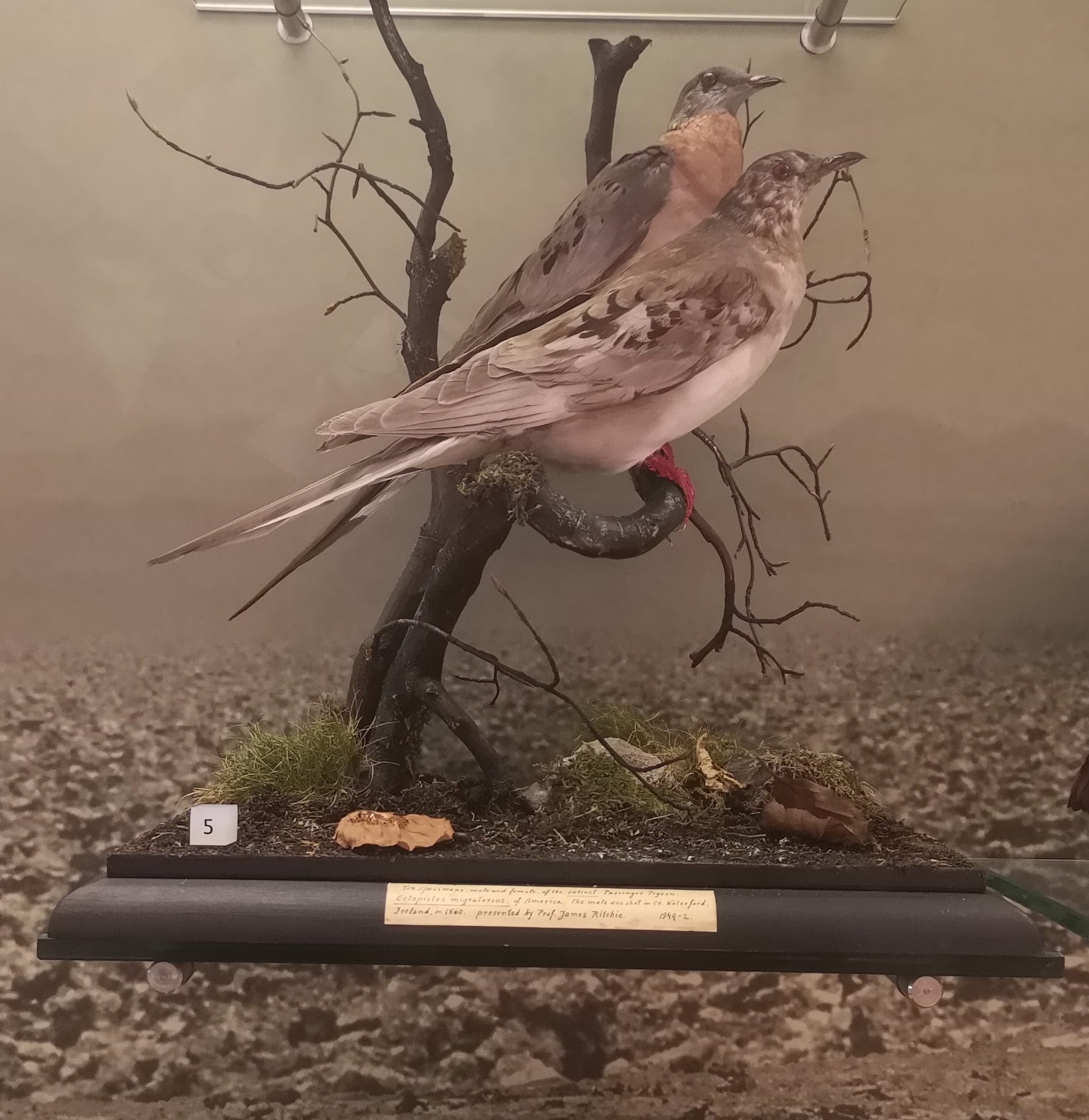
Ewan Davidson and I met at the National Museum of Scotland to listen to Luke Jerram‘s Extintion Bell which sounds at random intervals, just once, approximately 170 times a day, indicating the number of species lost worldwide in every 24 hour period.
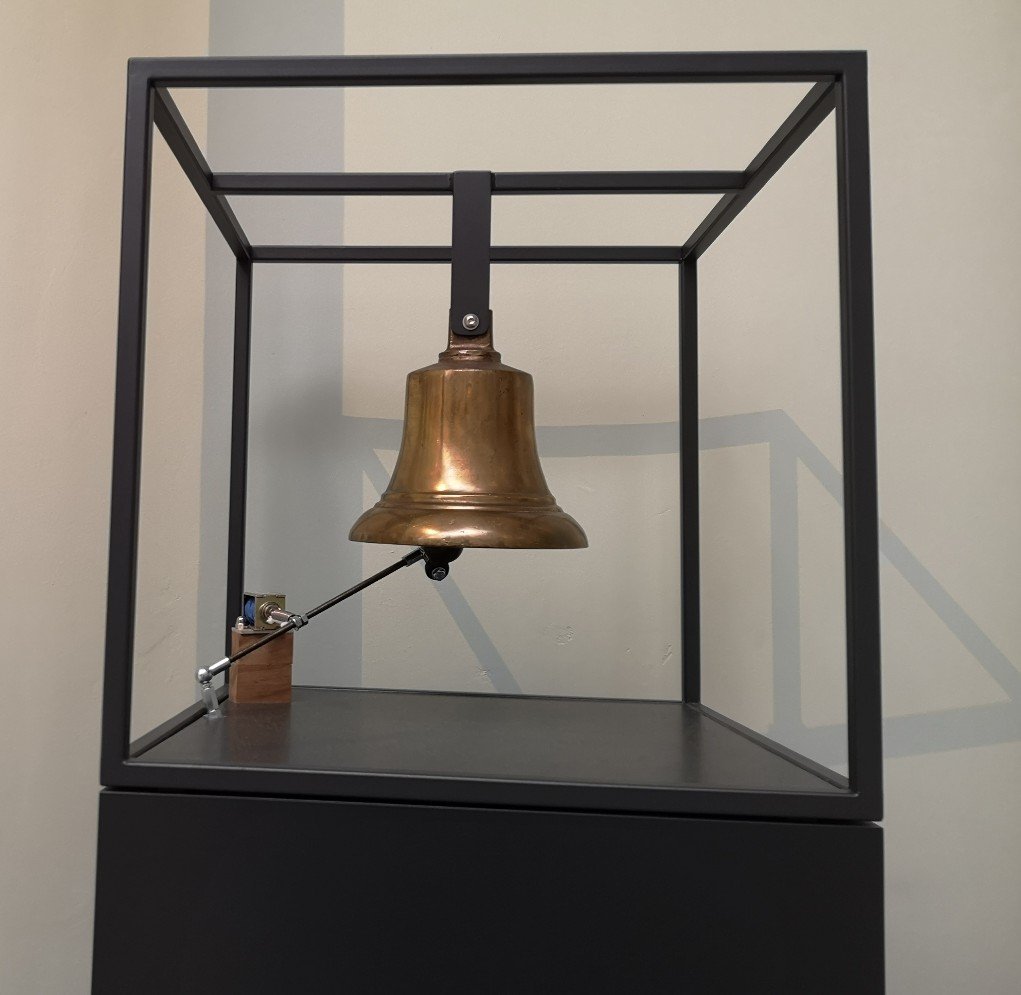
Occurring in huge numbers in North America in years gone by, Passenger pigeons were extinct in 1914. They had been hunted for meat and as pests, and their habitat was destroyed. Martha was the last of her species, and she died in captivity.
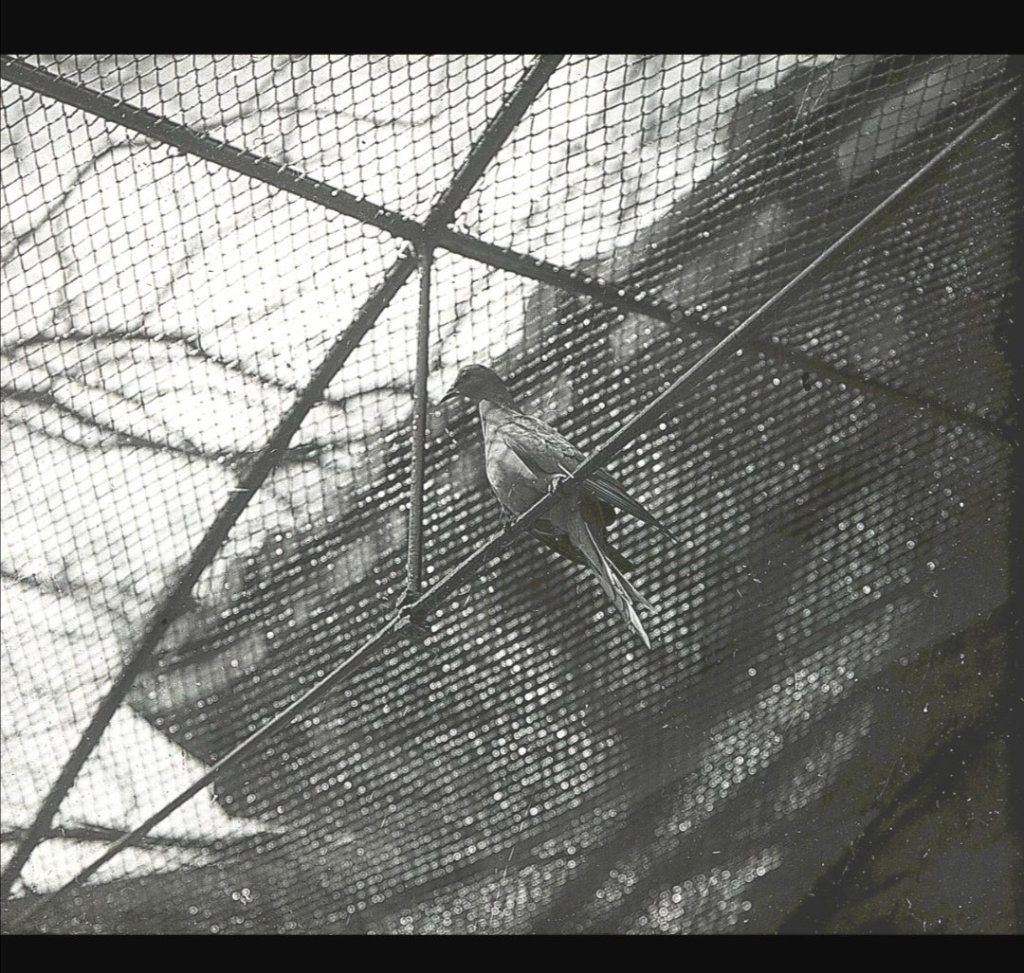
The Passenger part of the pigeon’s name derives from the French passager, to pass through, referring to its massive migrations. It connects to the Peregrine falcon, where ‘peregrine’ is said to come from pèlerin, the French for pilgrim, also on account of its migratory habits. It’s a description I sometimes give myself.
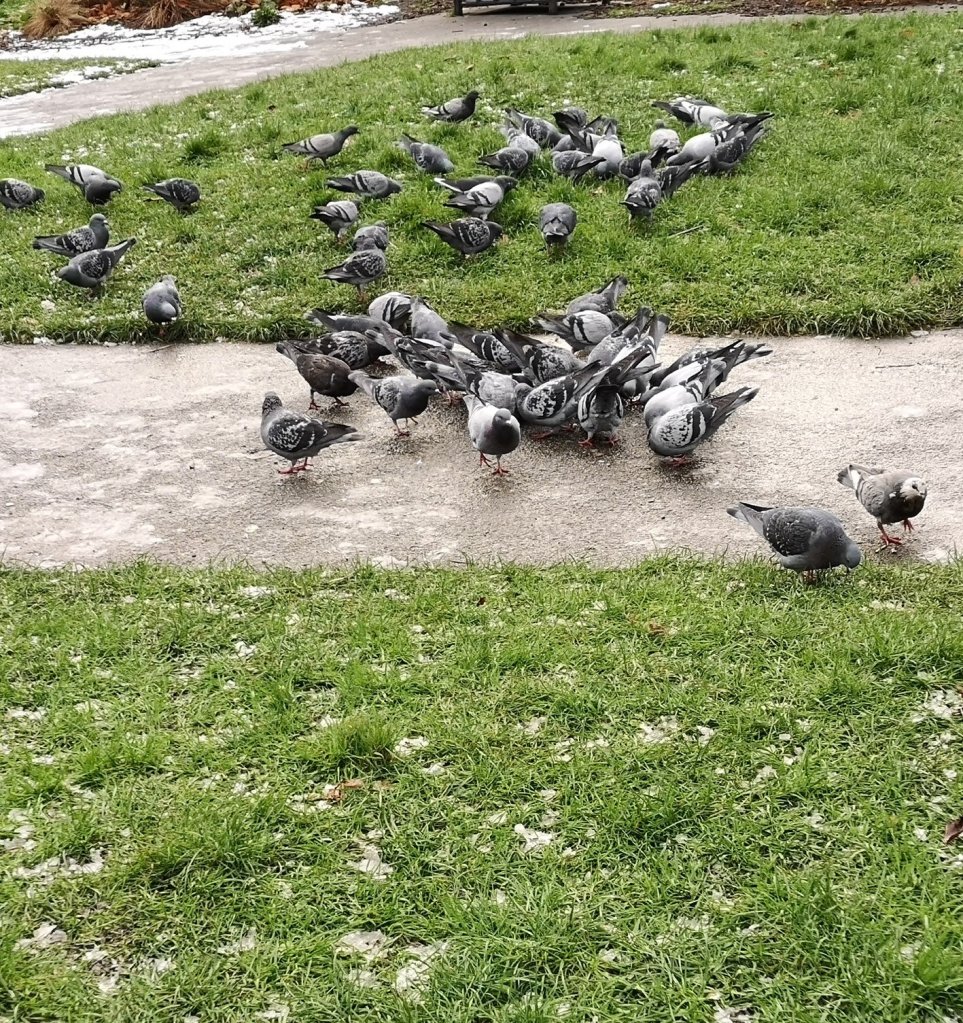
[the Peregrine falcon is] the world’s most widespread raptor, and one of the most widely found bird species. In fact, the only land-based bird species found over a larger geographic area is not always naturally occurring, but one widely introduced by humans, the rock pigeon, which in turn now supports many peregrine populations as a prey species
Wikipedia
Before that, these birds lived en masse. They fed, swarmed, perched and roosted in large groups, and in their absence, I spent some time in Nicholson Square in Edinburgh. I sat and watched the antics of the Common pigeons / Rock doves and Wood Pigeons (Columbidae family). I observed them stepping fast, balancing on each others backs in what I might term excitement as they ‘fought’ each other for the seeds which the kids were feeding them. They flapped off at the slightest human gesture, though individuals were clasped and carried carefully by one child when he could manage it.
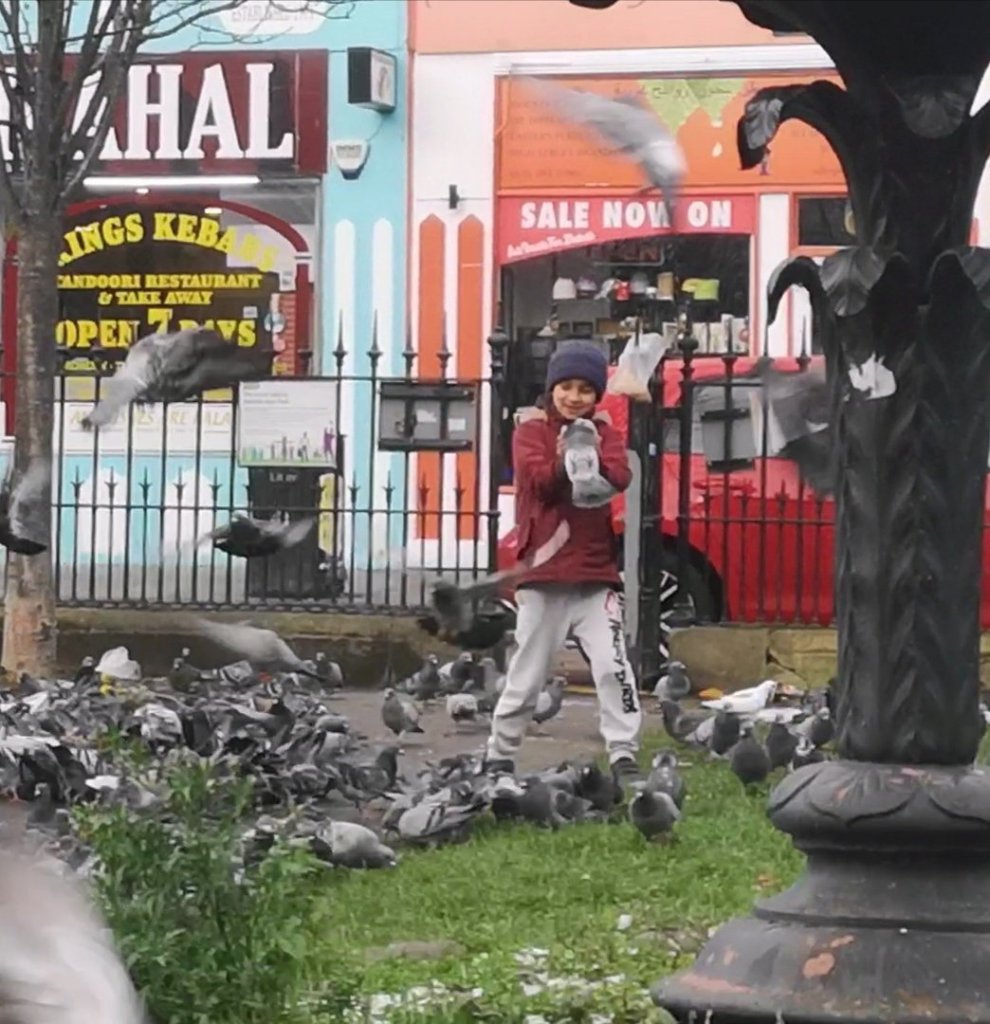
Their movements could mostly be described as ‘nervy’ and ‘agitated’. (It’s interesting how easily the vocabulary of human behaviour comes to mind when I attempt to describe them. It’s a symptom of our tendency to refer to others (other people, and other-than-humans) through our own eyes, using our own terms. In one way its inevitable, after all I only know me, and if I’m being generous, I could say that I am trying to identify with them, but if I caution myself to describe, rather than liken, then I get some distance, can see more clearly beyond my own realm.)
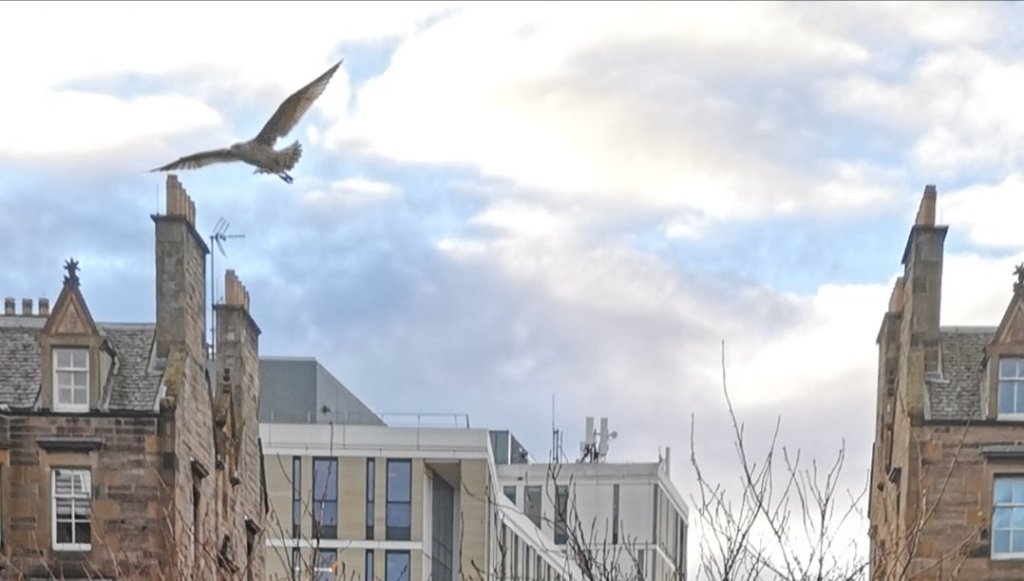
So, I will start again, to help you see what I saw more objectively. They make short, forward and backwards, staccato pecks, with their necks; sometimes they waddle, the fattest part moving side-to-side. They take fleet running steps, gently bump into each other, but don’t seem to mind, and they do sudden take-offs. They flutter a few feathers occasionally, change direction often, and have their heads, their eyes, down most of the time. Every now and then they make a quick exit.
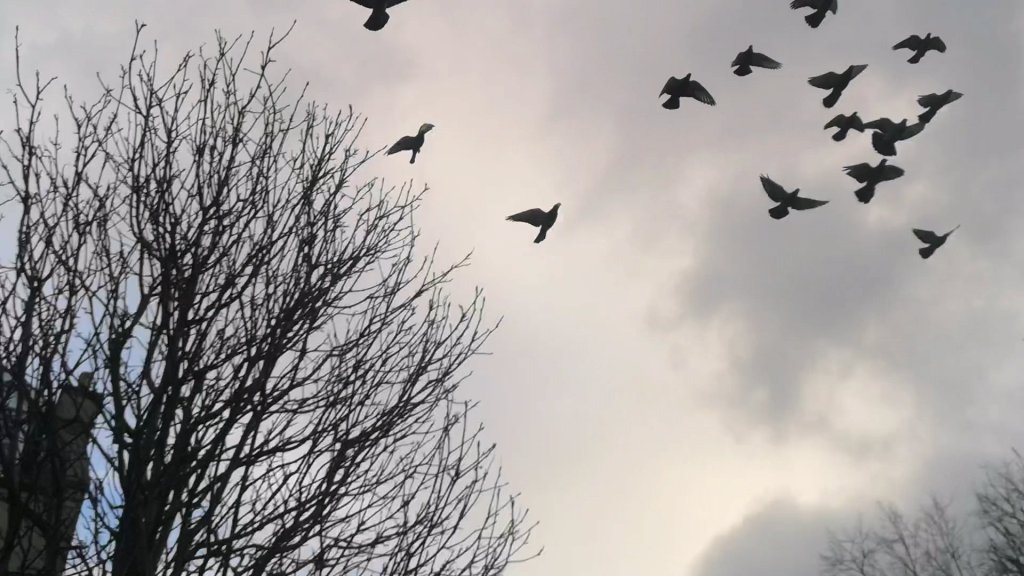
Collective escapings happened several times when I was there: a great, almost but not quite simultaneous, lifting and clattering. (I keep returning to this word to describe the noise of a pigeon quickly leaving a copse or pavement. Though it’s not the metal saucepan kind of clatter, it is a more irregular, continuous noise and rhythm made by wings batting the air down. You can sense the effort and impetus behind the action.)
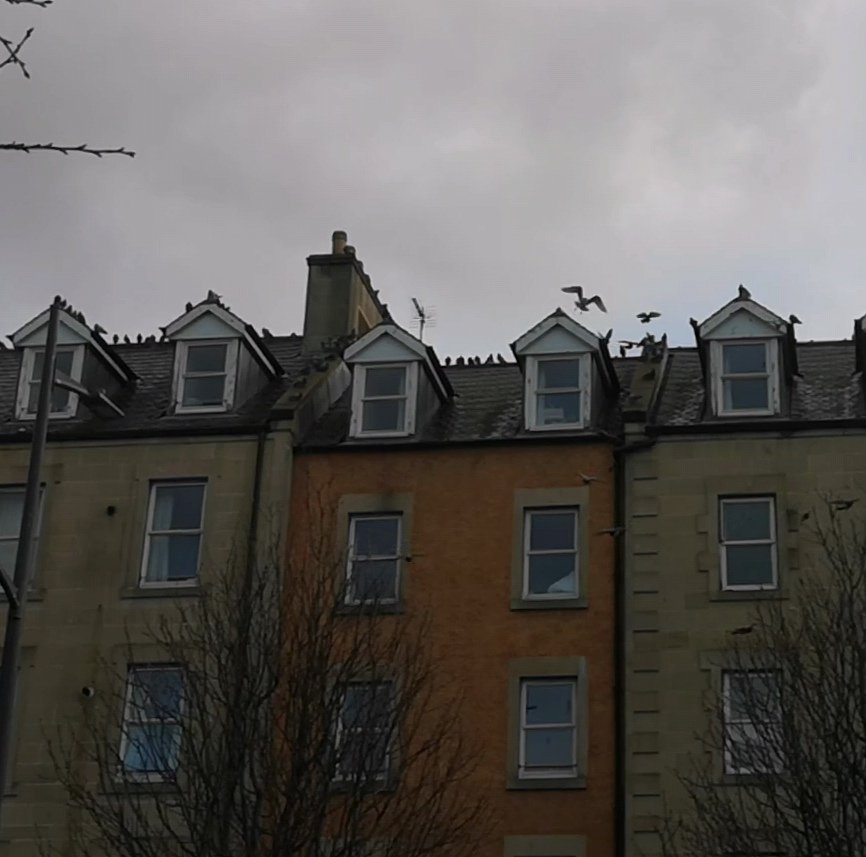
Then they are whirling above, and I’m less aware of individuals and more of the group shape, shifting and coordinating seamlessly. They sweep around and around, their elipse becoming a sphere, really like bees swarming, the spaces between them widening, closing. Sometimes their mass is raggedy and I fear they will come right apart, but somehow they gather back in before settling on the roofs of the tenements opposite. One, two, three, five, seven, eleven, hundreds. In a second they’re still, perhaps jostling, a little preening between vanes to put everything in order. And they wait until the coast is clear before reversing the whole process to resume their feeding frenzy on the ground.
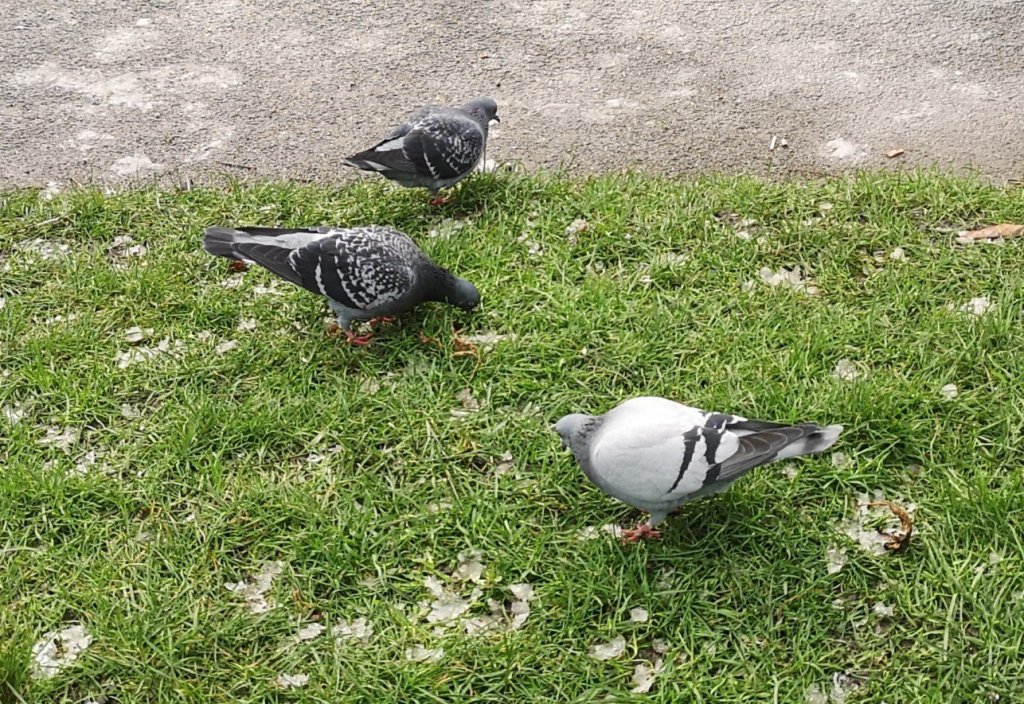
The Sixth Extinction… has accelerated massively since the start of the industrial era, when our ability to wreck havoc on the non-human lifeforms that share our planet has reached awesome proportions.
Nick Hunt, A Bell for Lost Species, Dark Mountain 2015
Roll call for the pigeons and doves which are now extinct
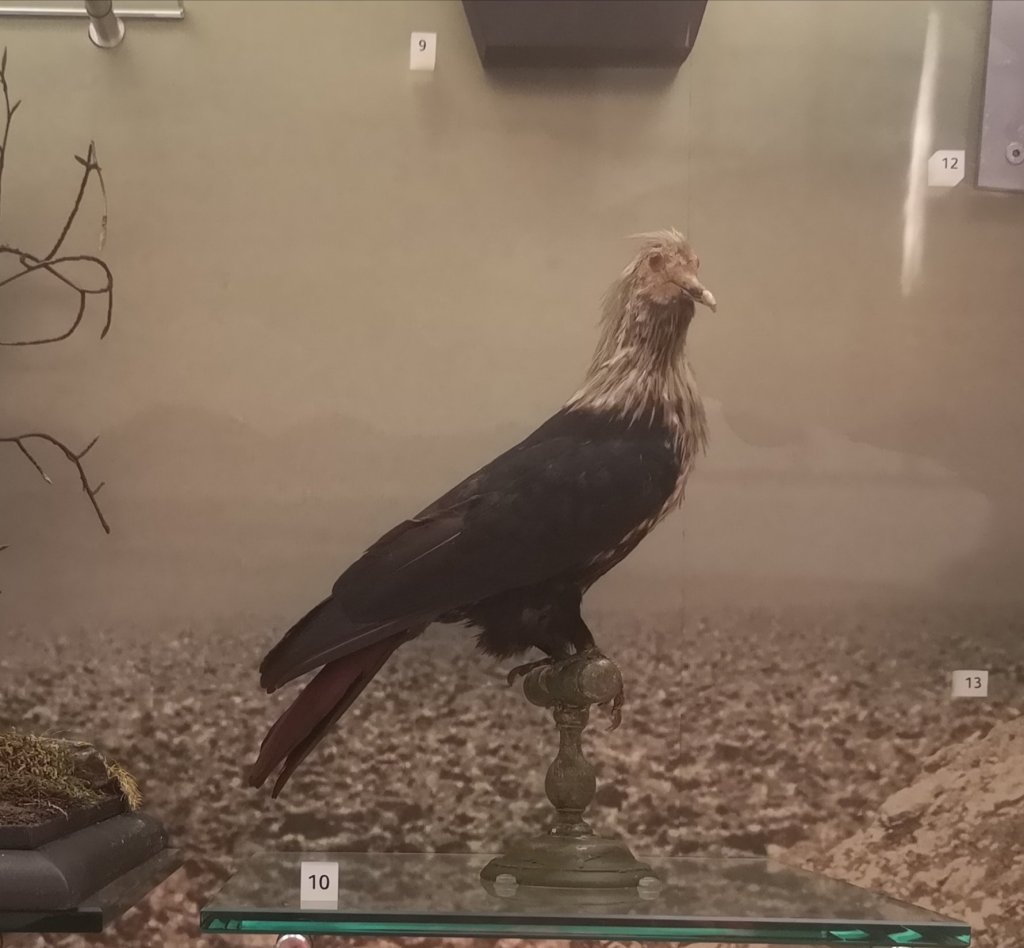
- Tanna ground-dove 1800
- Norfolk Island ground dove 1800
- Lord Howe pigeon 1790
- Spotted green pigeon 1820s
- Norfolk Island pigeon 1839
- Mauritius blue pigeon 1840
- Réunion pigeon 1850
- Rodrigues pigeon 1850
- Choiseul pigeon 1904
- Thick-billed ground dove 1927
- Ryukyu pigeon 1936
- Red-moustached fruit-dove 1950
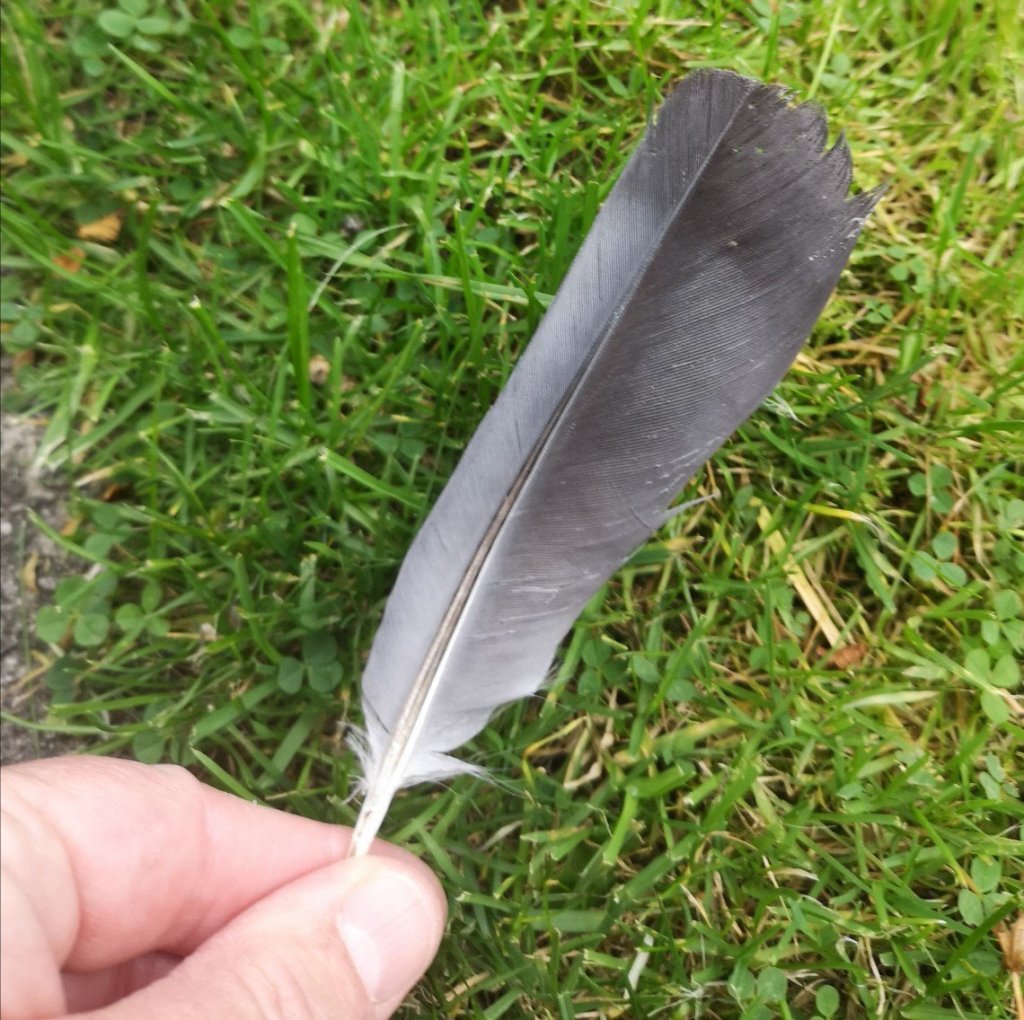
What must it have been like for one, solitary Passenger pigeon to be singled out, captured and die in a small cage alone? The flocks of these wonderful birds were said to measure 4 miles by 1 as they flew, to take two hours to pass overhead there were so many. They were massacred and trapped for commercial reasons and to, apparently, protect crops. Ironically, shortly before there were none of these birds left, the Lacey, then the Weeks-McLean Acts were passed in Iowa to prohibit trade in wildlife. They marked the start of conservation as we know it today. In 1918 the Migratory Bird Treaty Act was passed which protected the eggs, nests and feathers, as well as the birds themselves. (source: Barry Yeoman audubon.org 2014).
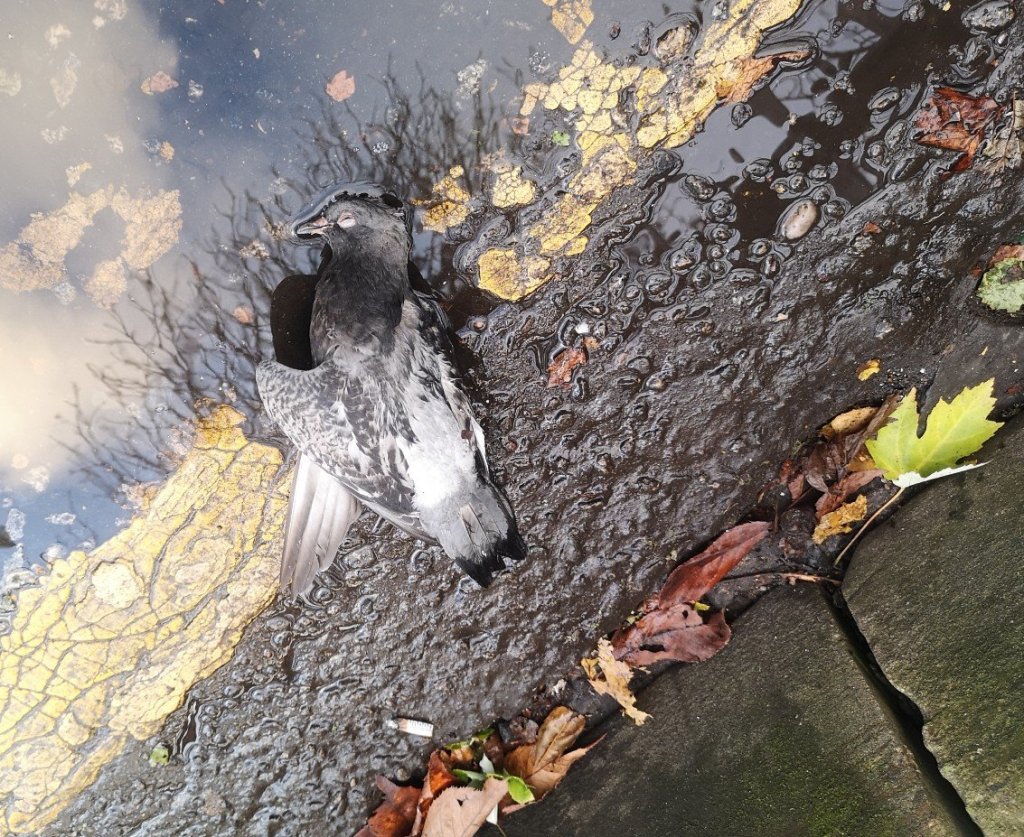
Our English word ‘bell’ comes from the Saxon bellan, meaning to bawl or bellow. Spending quiet time with other members of the Columbidae family resulted in some bawling in grief, a fitting response I think to the whole-scale extermination of Passenger pigeons.
You might also like this article from the Smithsonian Institute
Related blogs: Remembrance Day for Lost Species

Thank you. Very moving and thought provoking.
LikeLike
Thank you Lesley, it was a worthwhile experience
LikeLike